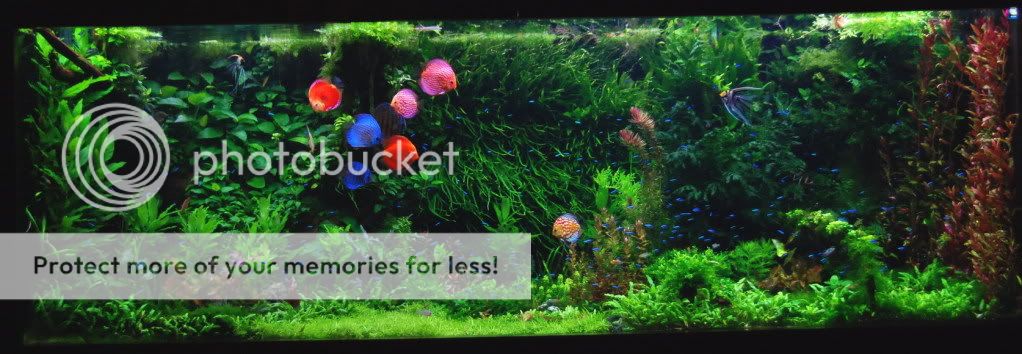No aquarium is ever perfect, we can get closer and closer. This aquarium is a very challenging to photograph, since it is so long. This also makes a challenge to aquascape.
Using many different nice sized groups and triangle shapes helps a great deal. Since you cannot get the full effect on one view easily, it helps to break up into many different groups and contrast.
This seems to be a main theme in most Dutch NBAT aesthetics. I think many love this aesthetic, particularly those that enjoy a variety of different plant species. Many aquarirst go over board and lack enough control to chose nice groupings, they keep adding more and more species. I call this a disease "collectoritus", or too many species. To do the aquascape well, "collectoritus" must be addressed and self discipline maintained.
This is difficult for most new planted hobbyist. I use some elements of older dutch scaping methods, but developed my own style since I have always had lots of nice driftwood available. Driftwood displaces plants, so a balance must be struck. The same is true for rock work. As the plants grow, they often overshadow and hide ther driftwood and the rock work.
This takes a lot of the work of trimming out of the scape by adding elements that do not require trimming.
But........we can also reduce and control the rates of growth in any aquatic plant garden with light intensity.
So we can control the rates of growth by light.
We can also control the rates of plant growth by limiting PO4 moderately.
Plants respond reasonably well to moderate limiting PO4.
This is not for algae control however.
Some older tanks I've seen from the 1940's-1950's used no CO2, but still did very nice gardens.
This also is used to reduce the rates of growth and thus maintains the garden at the prime state we want.
Designs and aesthetics vary a great deal and are very personal.
But finding horticultural methods to achieve and maintain these varied goals are much less personal and much more applied to the hobby. They make management easier and health and vitality of the aquarium nicer.
These are much more common goals than design/aquascape alone.
ADA style of aquariums has taken a large leap in the last 10 years, but I'd like to see this style brought out of NR and more into a world wide style. I think it has a lot to offer the person who truly loves the plants.
I love fish and driftwood, so those take a large role in most of my own aquariums. Really nice tank Bart. That is a lot of work and good timing for the post grow out phase.
Dutchy,
If Bart pursues non limiting CO2/nutrients, then the rates of growth will increase perhaps 2-3x. Unless the aquarium has a reduced light PAR, maybe 20% reduction, the rates of growth might be a lot more work than Bart might be willing to deal with.
So this can be both good and bad depending on his management goal. Good if the goal is to have optimal plant health/growth rates, and he enjoys pruning/topping.
If the goal is less pruning, and he is happy with the way things are going, he does not want to reduce the light intensity or cannot do it easily, then maybe not.
Often there are a few bumps when someone switches, but most of the time I've found most are pleasantly surprised and happy.
I also suggest a good rich sediment as well as rich water column, then good rich well mixed CO2......then reduce the light down to 40 micromols or so along the bottom of the sediment.
Many are conflicted since they believe more light is better, but this conflicts with having to add more CO2 and more nutrients.
This ADA tank has the same light as my 180 Gal tank as well as my 120 Gal etc.
Regards,
Tom Barr








